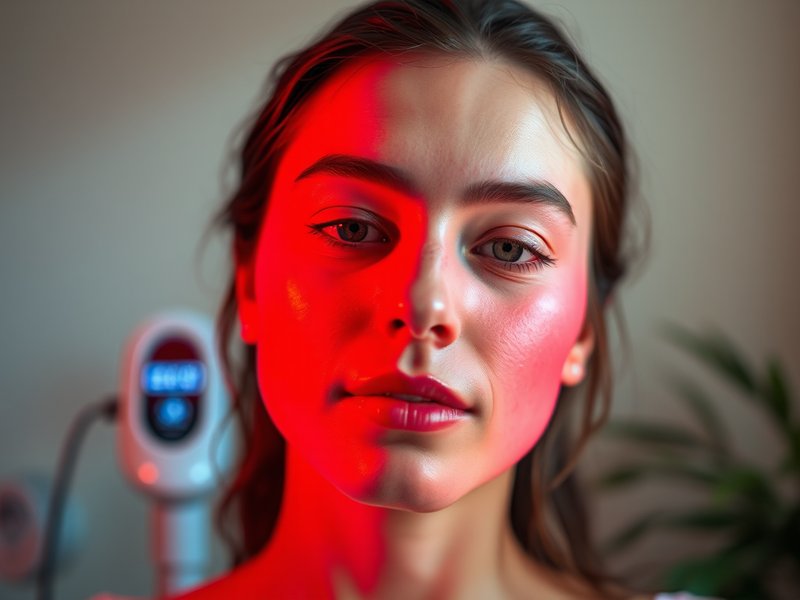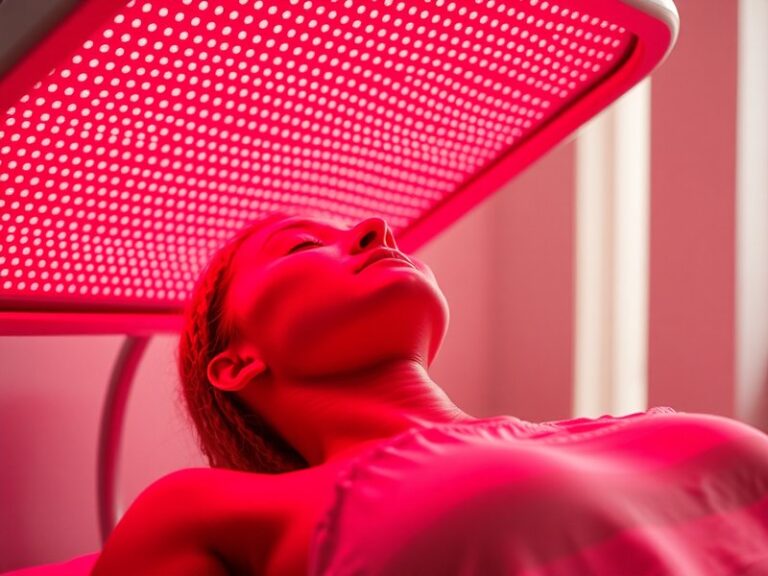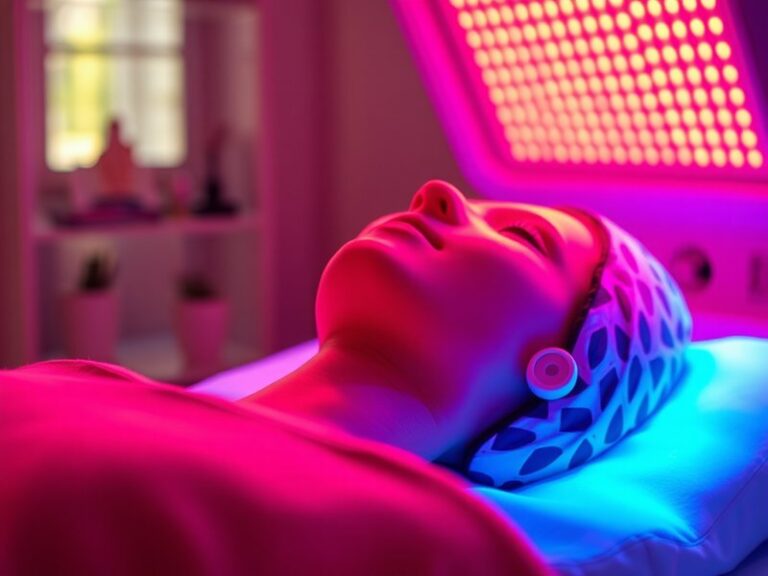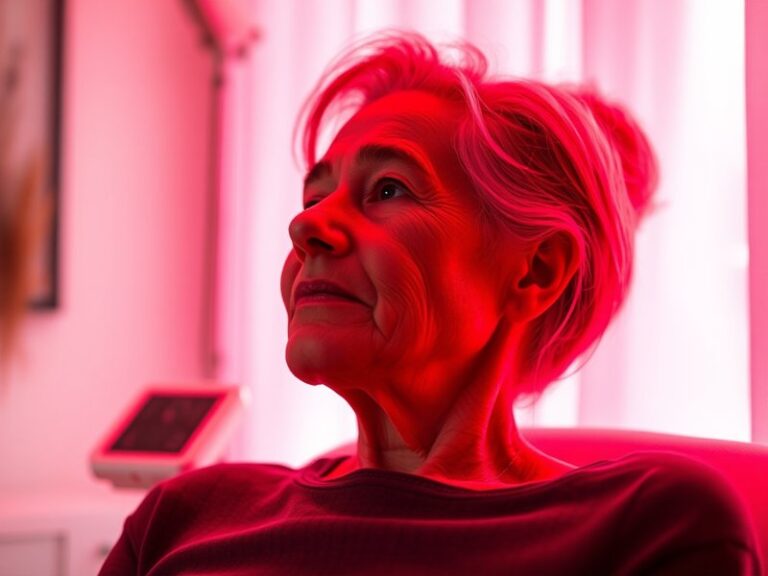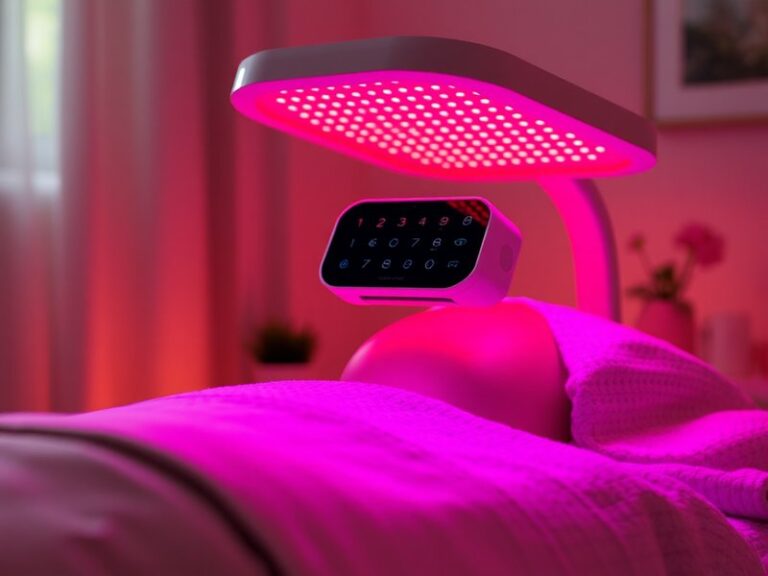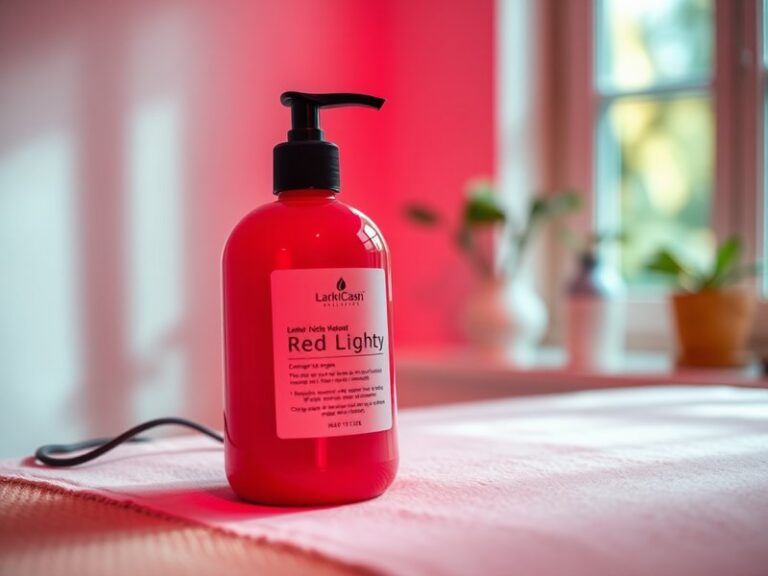Does Red Light Therapy Cause Acne?
Does Red Light Therapy Cause Acne?
Could your next skincare treatment actually trigger breakouts? As red light therapy gains popularity for its skin benefits, questions regarding its effects on acne arise. In this article, we will explore the relationship between red light therapy and acne, shedding light on the potential benefits and considerations before choosing this treatment.
Key Takeaways
- Red light therapy is primarily known for its anti-inflammatory and healing properties, which may benefit acne-prone skin.
- While some individuals report breakouts after red light therapy, these instances are typically linked to the skin’s reaction during the healing process.
- Proper skincare practices and consultation with a professional can minimize the risk of acne flare-ups during treatment.
What is Red Light Therapy?
Red light therapy (RLT) is a non-invasive treatment that uses low-level wavelengths of red light to stimulate cellular function. This therapy is often exploited in skincare due to its ability to penetrate the skin and promote healing at a cellular level. Originally developed for wound healing, red light therapy has since expanded into various applications, including addressing acne, scars, and signs of aging.
By targeting the mitochondria in our cells, RLT enhances energy production, resulting in improved skin health over time. Its ability to reduce inflammation and stimulate collagen production has attracted many seeking clearer, smoother skin.
Mechanism of Action
Red light therapy works by delivering light energy to the skin’s surface, which penetrates to deeper levels. This energy facilitates blood circulation and regenerates cells, promoting collagen formation and healing processes. Due to these mechanisms, it has been noted for its effectiveness in improving skin tone and elasticity.
What are the Benefits of Red Light Therapy?
Exploring the benefits of red light therapy reveals its promising potential in skincare, particularly for acne-prone individuals.
Anti-Inflammatory Properties
One significant benefit of RLT is its ability to reduce inflammation. This anti-inflammatory effect can help diminish the severity of active acne, potentially leading to fewer breakouts over time.
Accelerated Healing Time
Red light therapy can promote faster healing of acne lesions and reduce the appearance of scars left behind. Individuals who use RLT may notice a more rapid recovery after experiencing acne, making it an appealing option for many.
Increased Collagen Production
By stimulating collagen synthesis, RLT not only improves skin texture but also helps in minimizing the appearance of pores, which can further reduce the likelihood of acne.
Find all the details in Can a red light bulb be used for therapy?
Enhanced Skin Texture and Tone
Regular use of red light therapy may enhance the overall texture and tone of the skin, providing a more polished appearance that many find desirable.
Non-invasive and Safe
As a non-invasive treatment, RLT poses minimal risks compared to other procedures like chemical peels or laser treatments, making it accessible for various skin types.
Is it Possible to Cause Acne with Red Light Therapy?
While red light therapy is generally safe and beneficial, there are instances where some individuals may experience breakouts following treatment. This can be due to a few factors that merit discussion.
Skin Purging
Some may interpret post-treatment breakouts as an adverse reaction. However, this phenomenon, often referred to as skin purging, can be a normal response where existing clogged pores become inflamed before clearing up. This typically resolves after a short duration.
Overuse of Products Post-Treatment
Individuals sometimes apply new skincare products immediately after RLT, which might irritate sensitive skin. Using heavy creams or acne treatments right after therapy may lead to clogged pores and subsequent breakouts.
Underlying Skin Conditions
Those with underlying skin conditions might find temporary increases in acne due to individual skin responses. Consulting a dermatologist before beginning RLT can help assess the appropriateness of the treatment based on skin type and condition.
What are the Things to Consider Before Trying Red Light Therapy?
To optimize the benefits of red light therapy and minimize any potential adverse effects, consider the following before starting treatment.
Consultation with a Dermatologist
Before beginning RLT, it’s crucial to consult with a healthcare professional to determine if it’s suitable for your skin type and avoid aggravating any pre-existing conditions.
Patch Testing
If using at-home devices, performing a patch test can help gauge your skin’s reaction to the therapy, thereby reducing the risk of unexpected breakouts.
Choice of Device and Settings
Different devices have varying wavelengths and settings. Ensure you are using a reputable device with the correct specifications for acne treatment to attain desired results.
Check out the full story Benefits of Red Light Therapy
Consistency with Skincare Routine
Maintain a consistent skincare routine that includes gentle cleansing and moisturizing to prevent irritation and breakouts during red light therapy treatments.
What are the Alternatives to Red Light Therapy?
If red light therapy raises concerns or doesn’t seem like the right fit, several alternative treatments can help manage acne effectively.
LED Blue Light Therapy
Specifically targeting acne-causing bacteria, LED blue light therapy can be an excellent alternative. This treatment kills acne bacteria without damaging the surrounding skin and is known for preventing further breakouts.
Chemical Peels
Chemical peels exfoliate the skin and promote cell turnover, helping to clear clogged pores and reduce acne. This can significantly improve overall skin texture and appearance.
Microdermabrasion
Microdermabrasion is another non-invasive treatment option that exfoliates the outer layer of skin, helping to unclog pores and enhance skin uniformity. It’s often recommended for those seeking clearer skin.
Topical Treatments
Over-the-counter products containing salicylic acid or benzoyl peroxide can effectively manage acne without needing professional treatments. These ingredients penetrate pores to reduce bacteria and inflammation.
Conclusion: Is it Recommended to Use Red Light Therapy?
In light of the benefits and considerations outlined above, red light therapy can be a valuable tool in the fight against acne when utilized correctly. While it might not be suitable for everyone, its healing properties and minimal risks make it an option worth exploring. Consulting with a professional is advisable to tailor the treatment to your unique needs and avoid potential pitfalls associated with improper use.
Frequently Asked Questions
Can red light therapy worsen acne?
In some cases, individuals may experience temporary breakouts due to skin purging or irritation from post-treatment products, but red light therapy is generally beneficial for acne.
How often should I use red light therapy for acne?
Frequency depends on the device and personal skin needs. Starting with 2-3 sessions per week is often recommended, but consult a professional for tailored advice.
Is red light therapy safe for all skin types?
Yes, red light therapy is generally safe for most skin types. However, individuals with specific skin conditions should consult with a dermatologist before treatment.
What should I do if I experience breakouts after treatment?
If breakouts occur, evaluate your post-treatment skincare routine and consider consulting with a dermatologist to adjust your regimen as necessary.
Are there any side effects associated with red light therapy?
Red light therapy is known for its low risk of side effects. Some may experience mild redness or irritation, but these effects typically resolve quickly.
